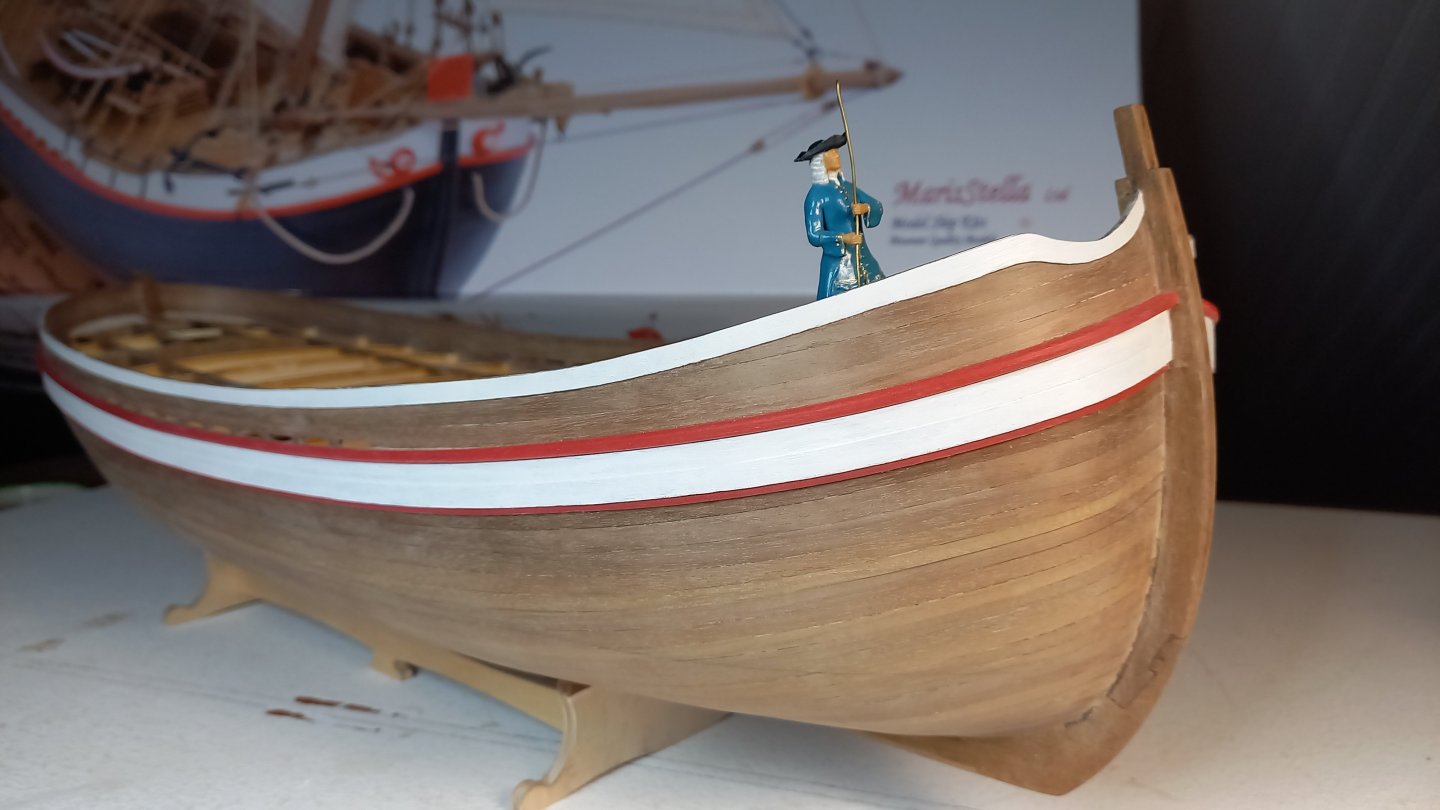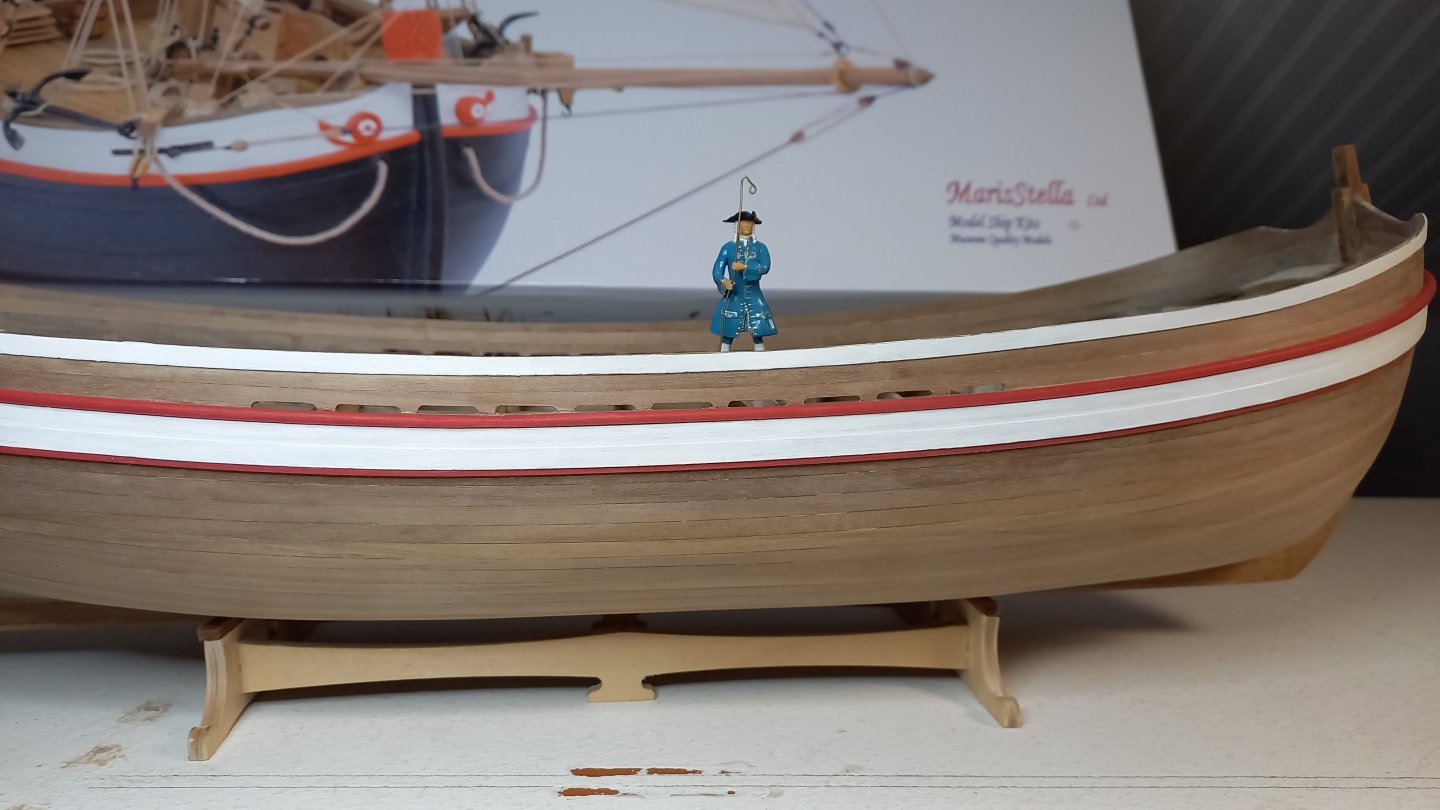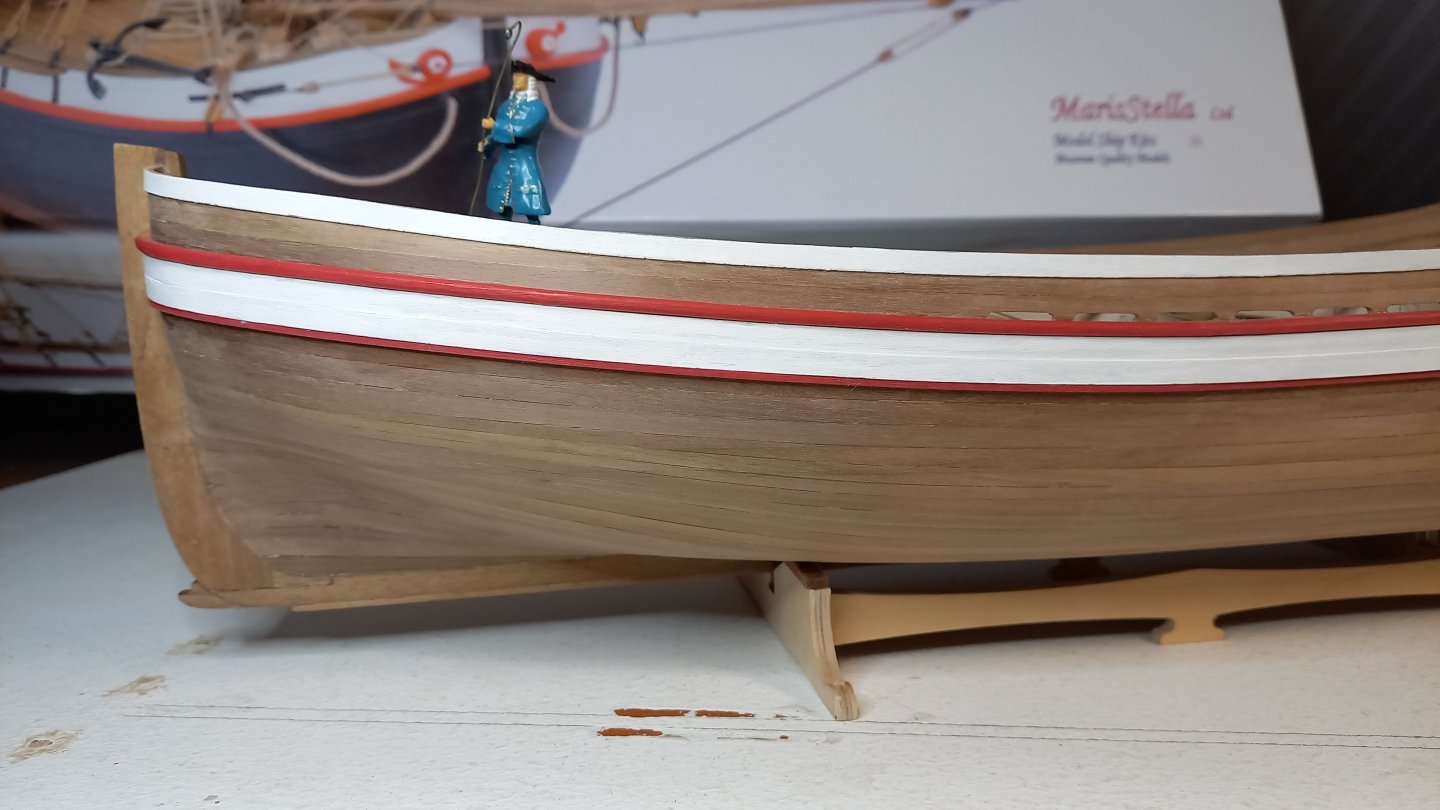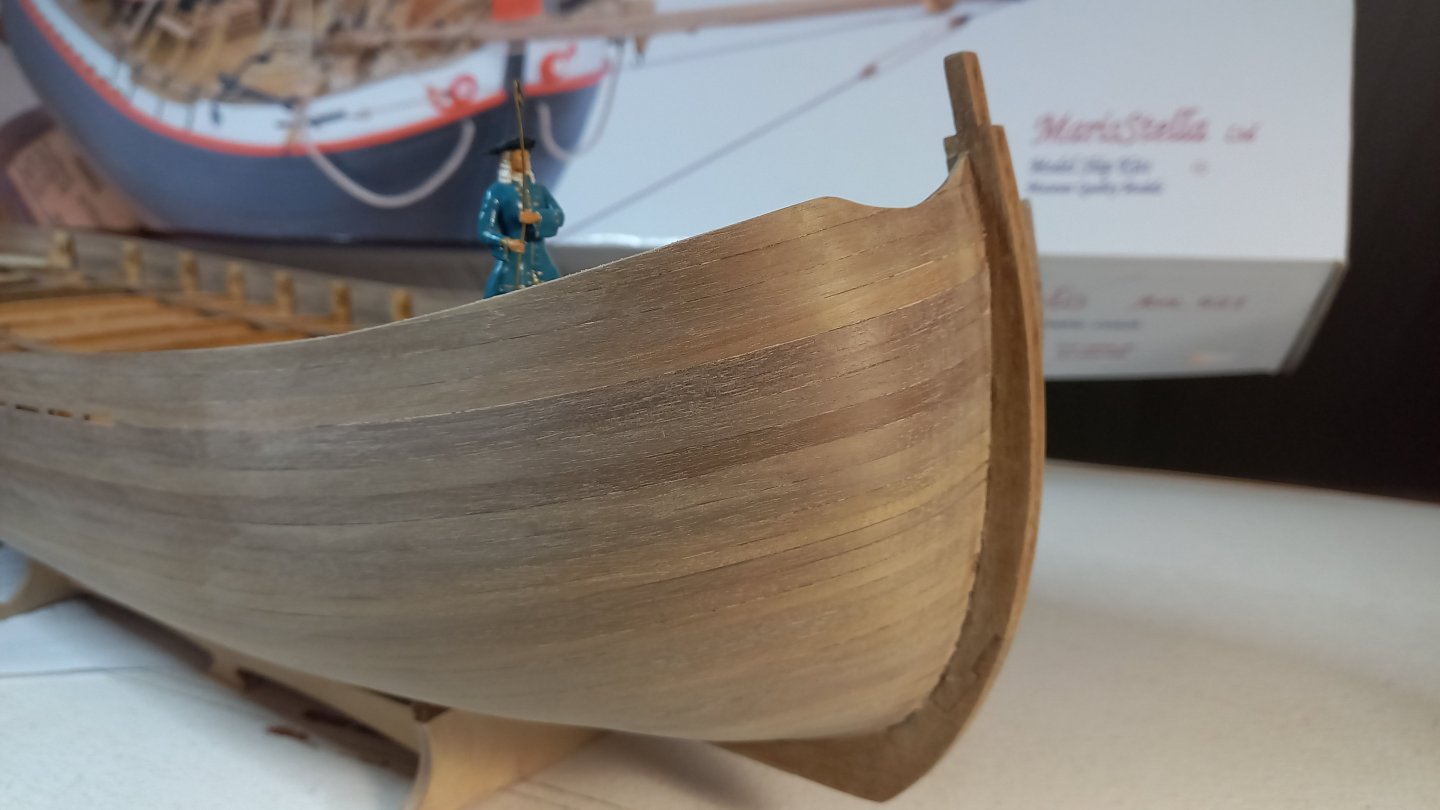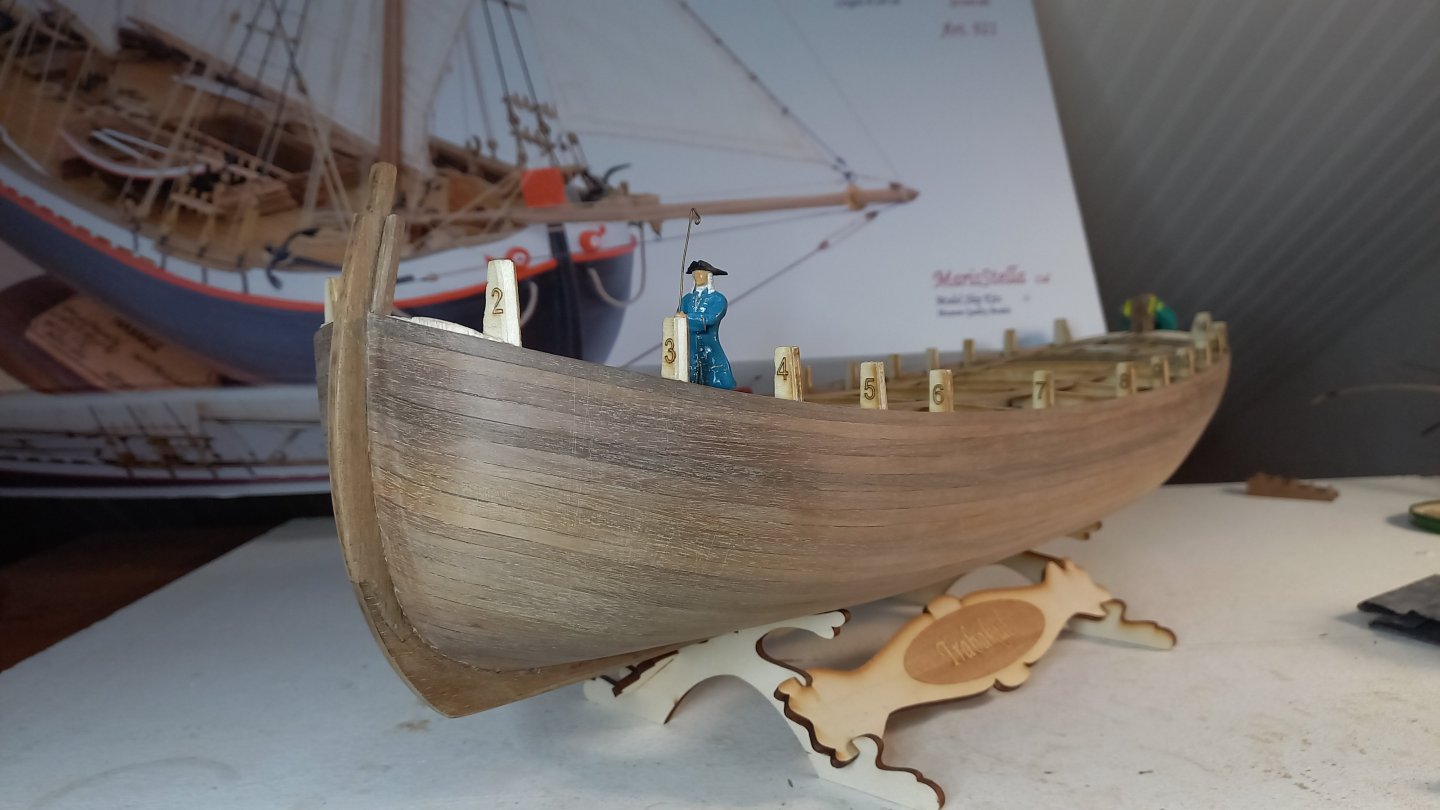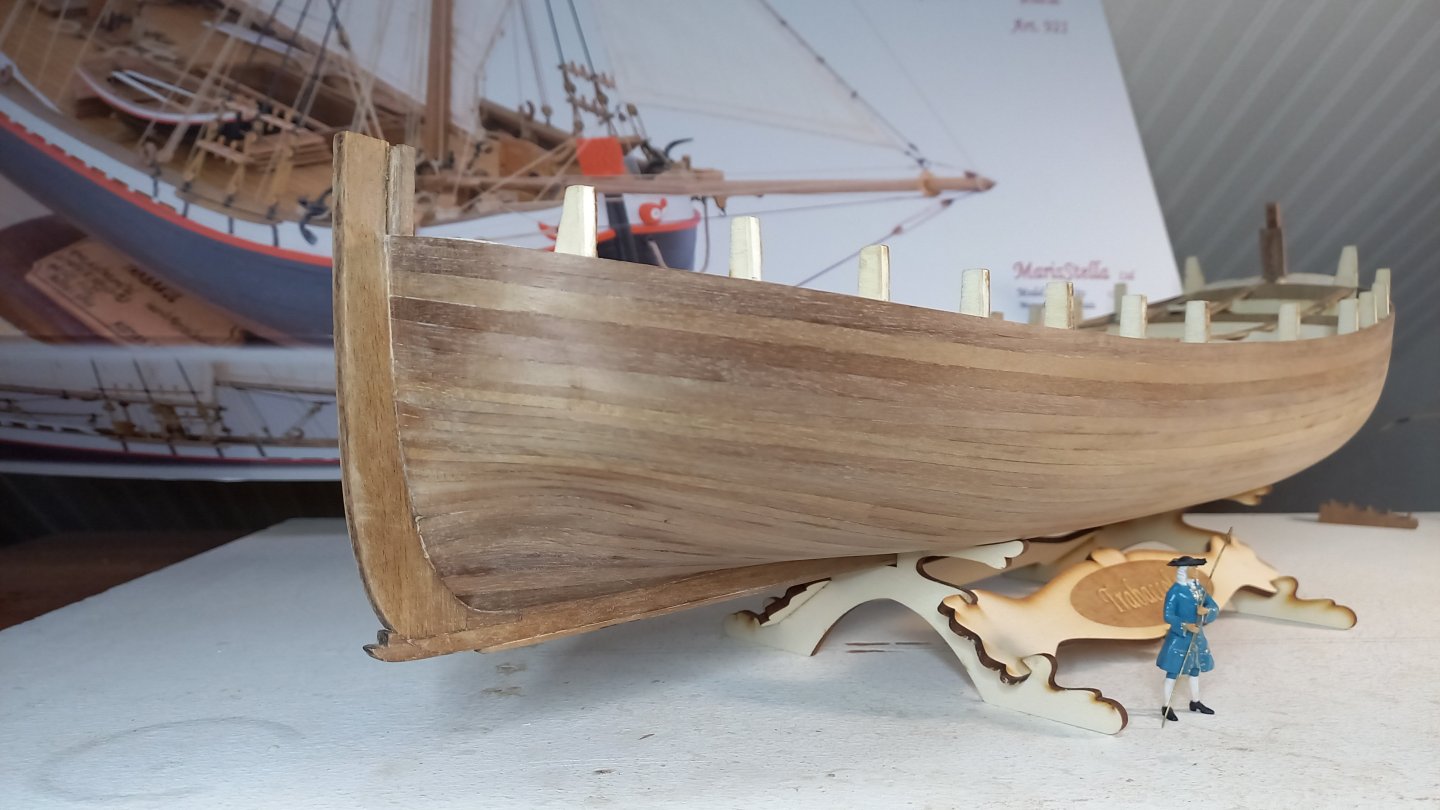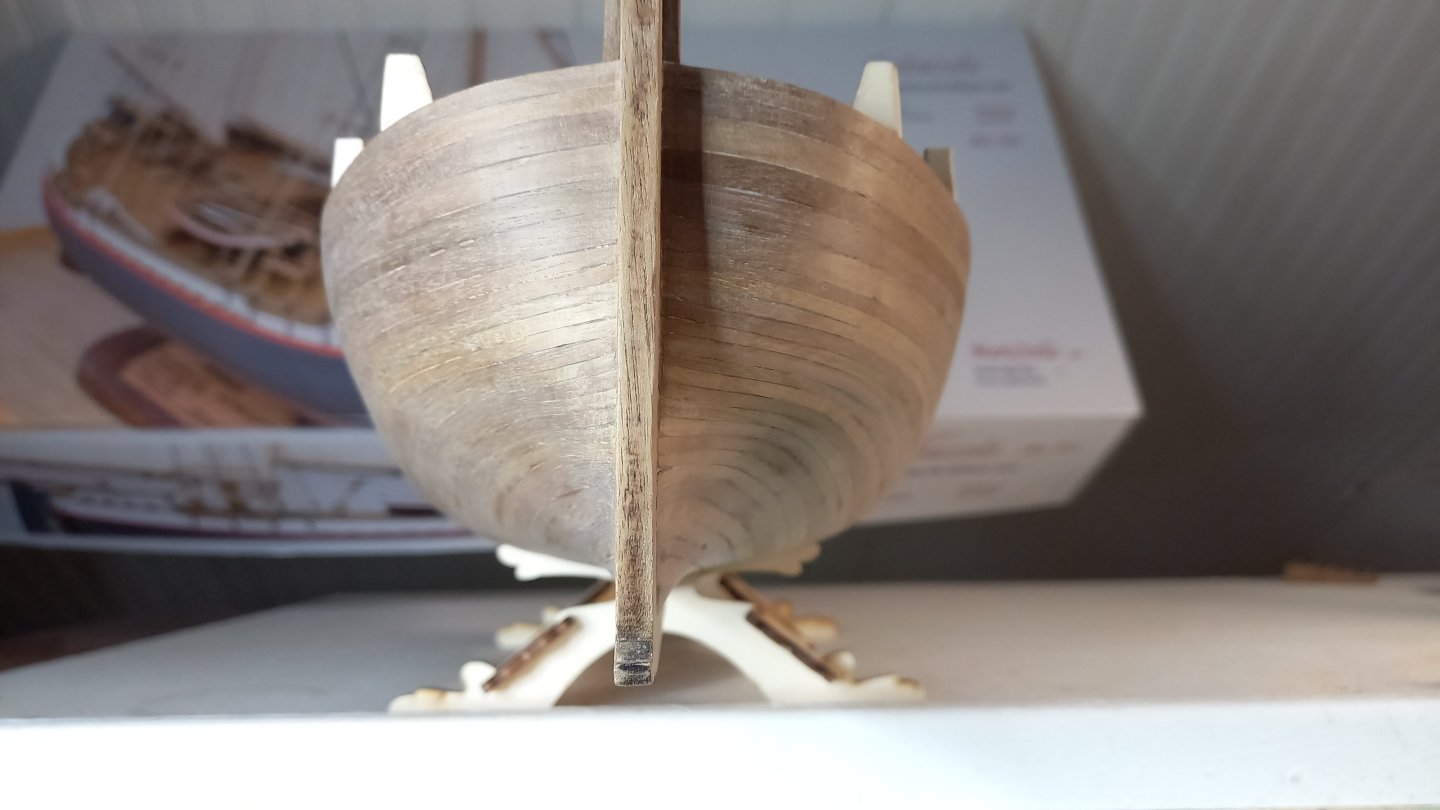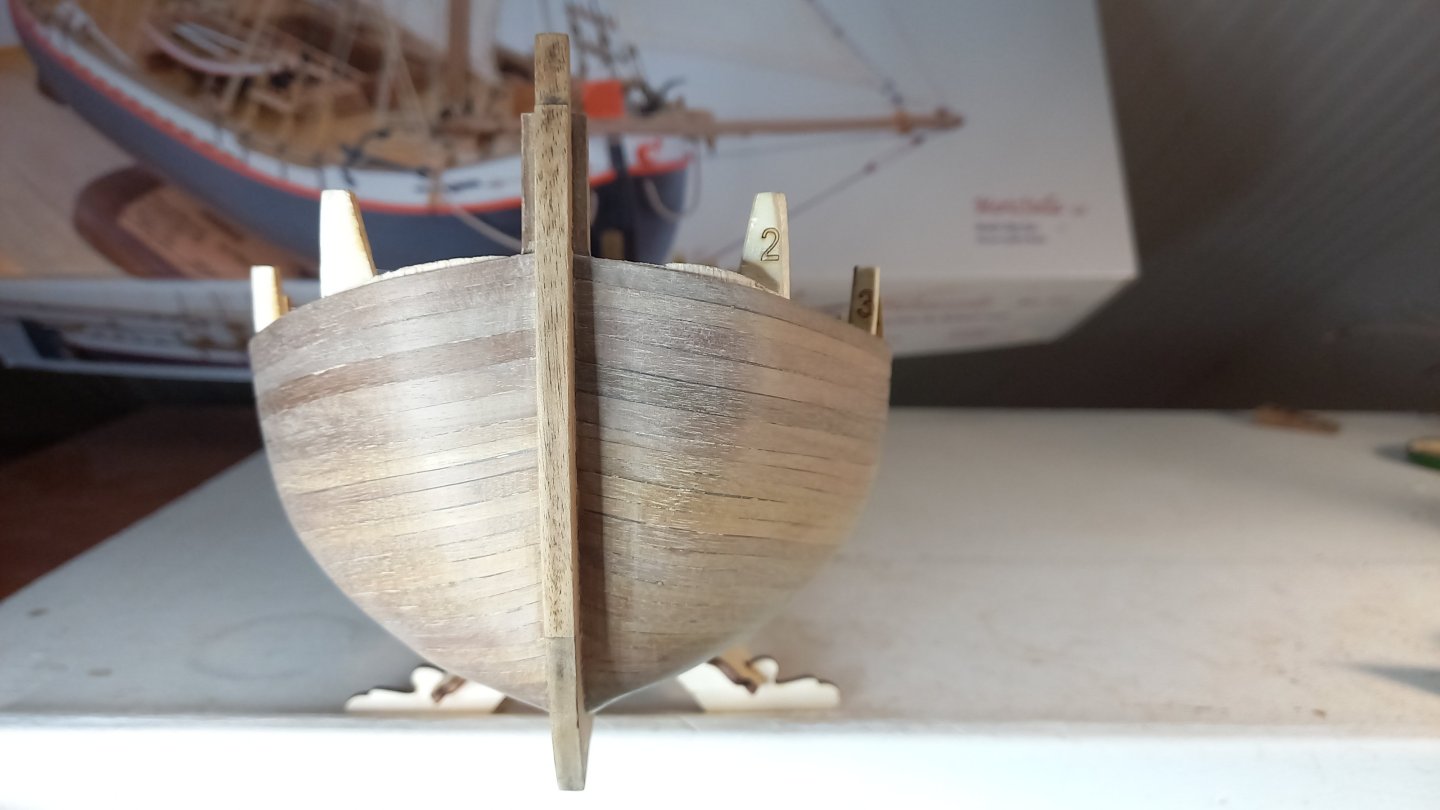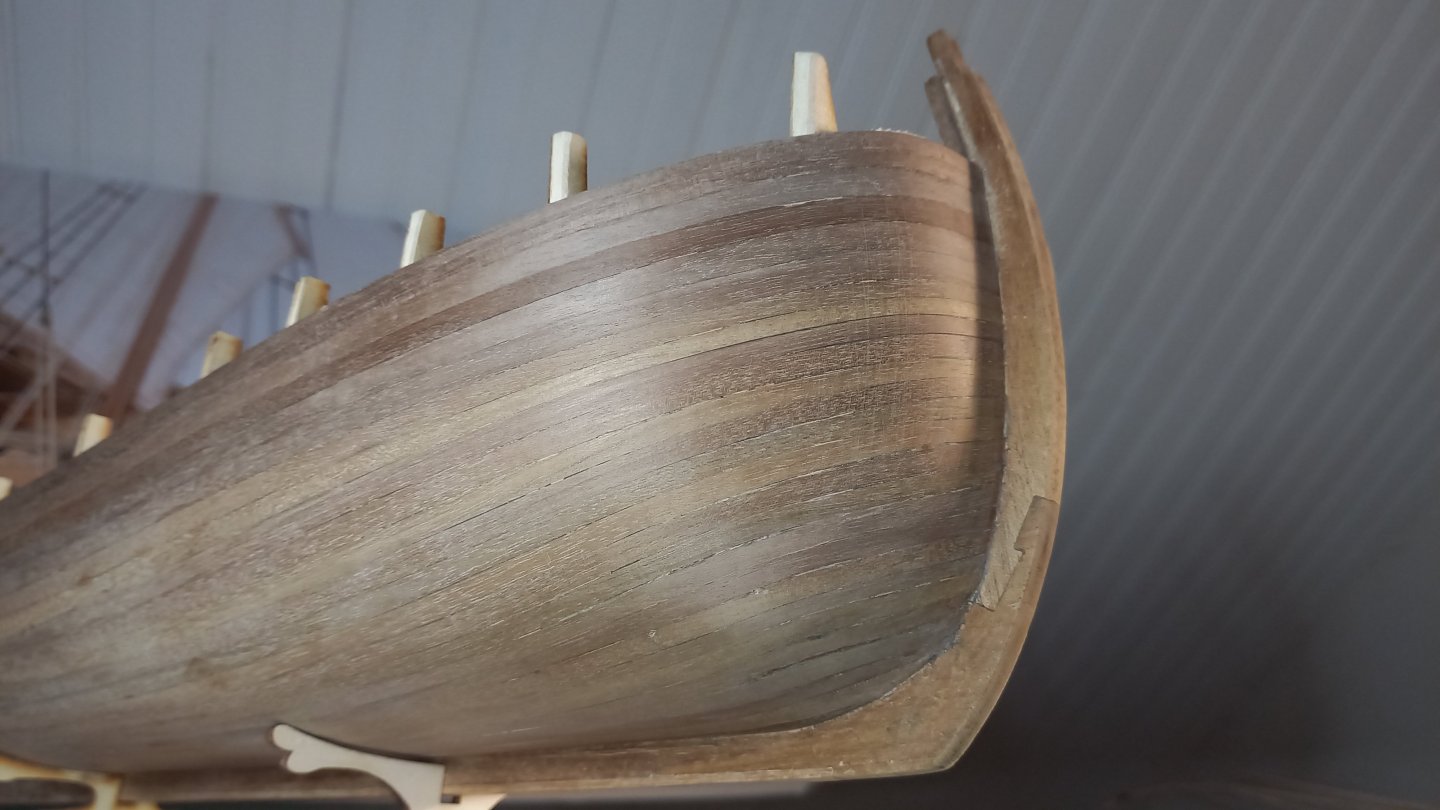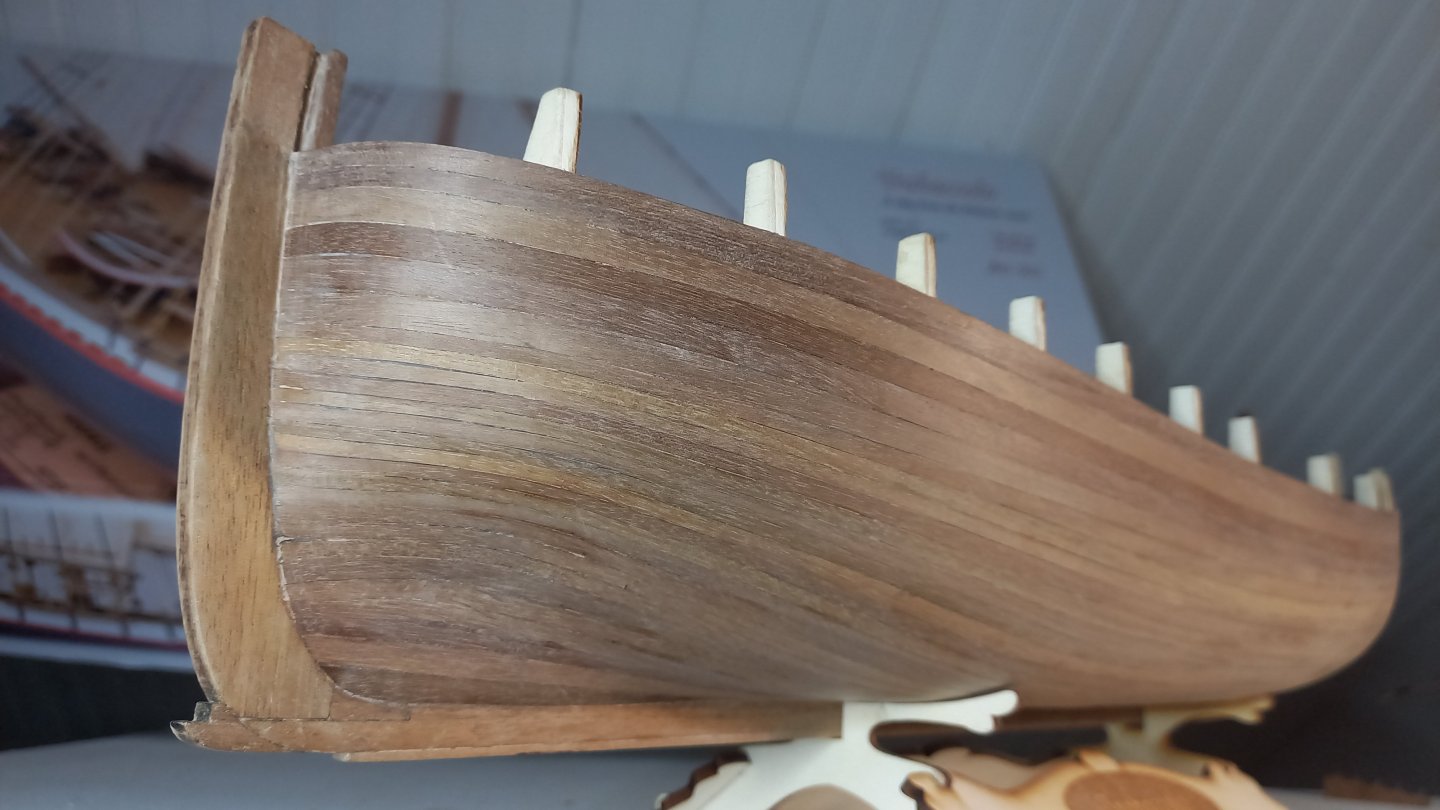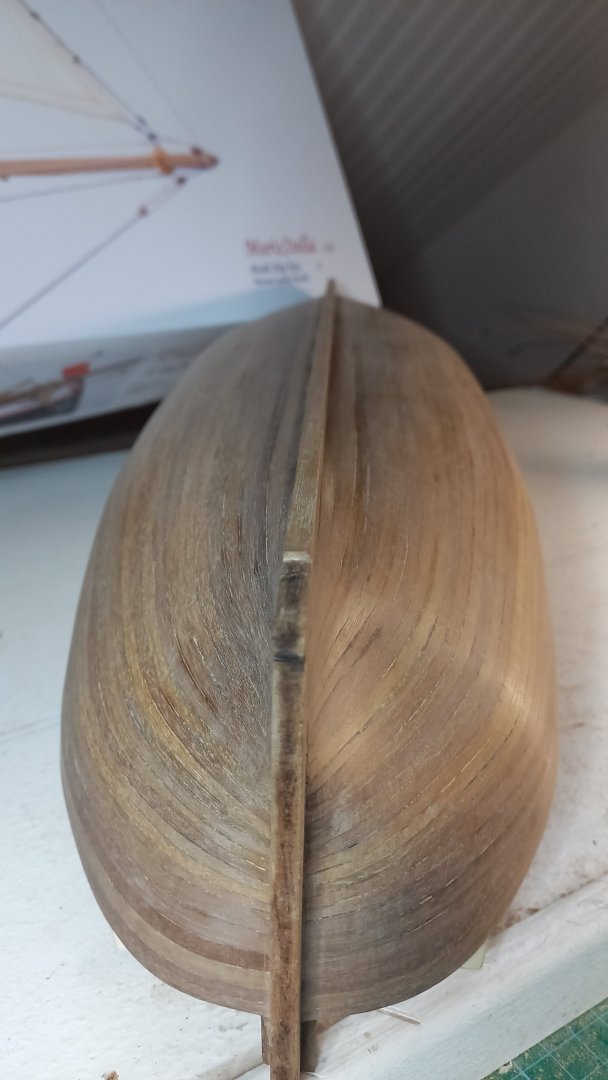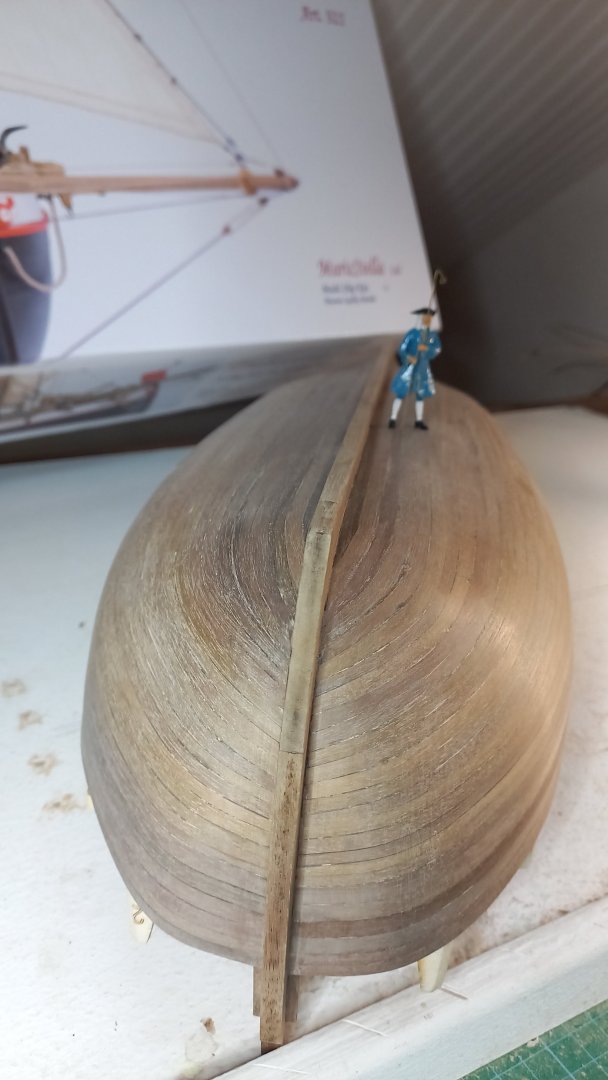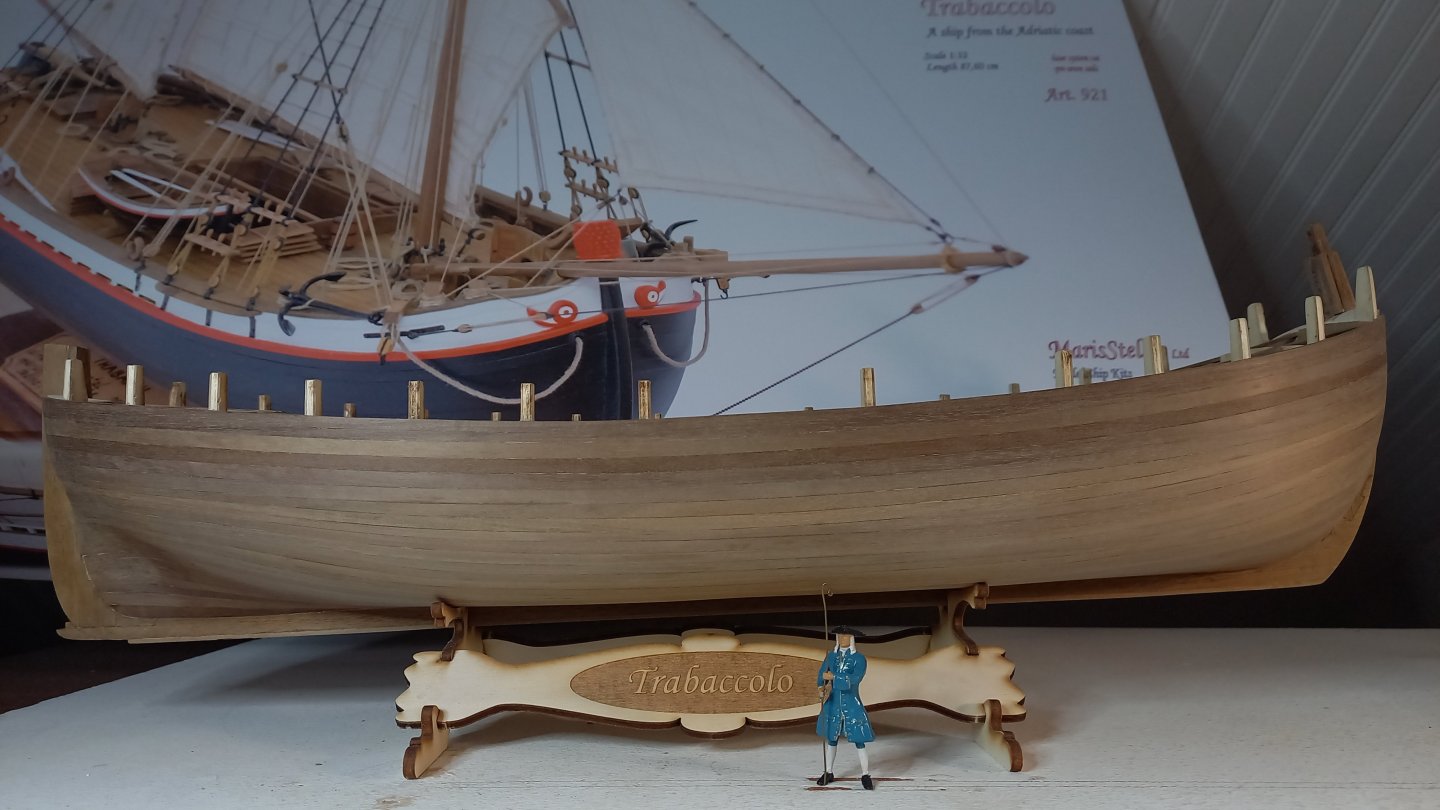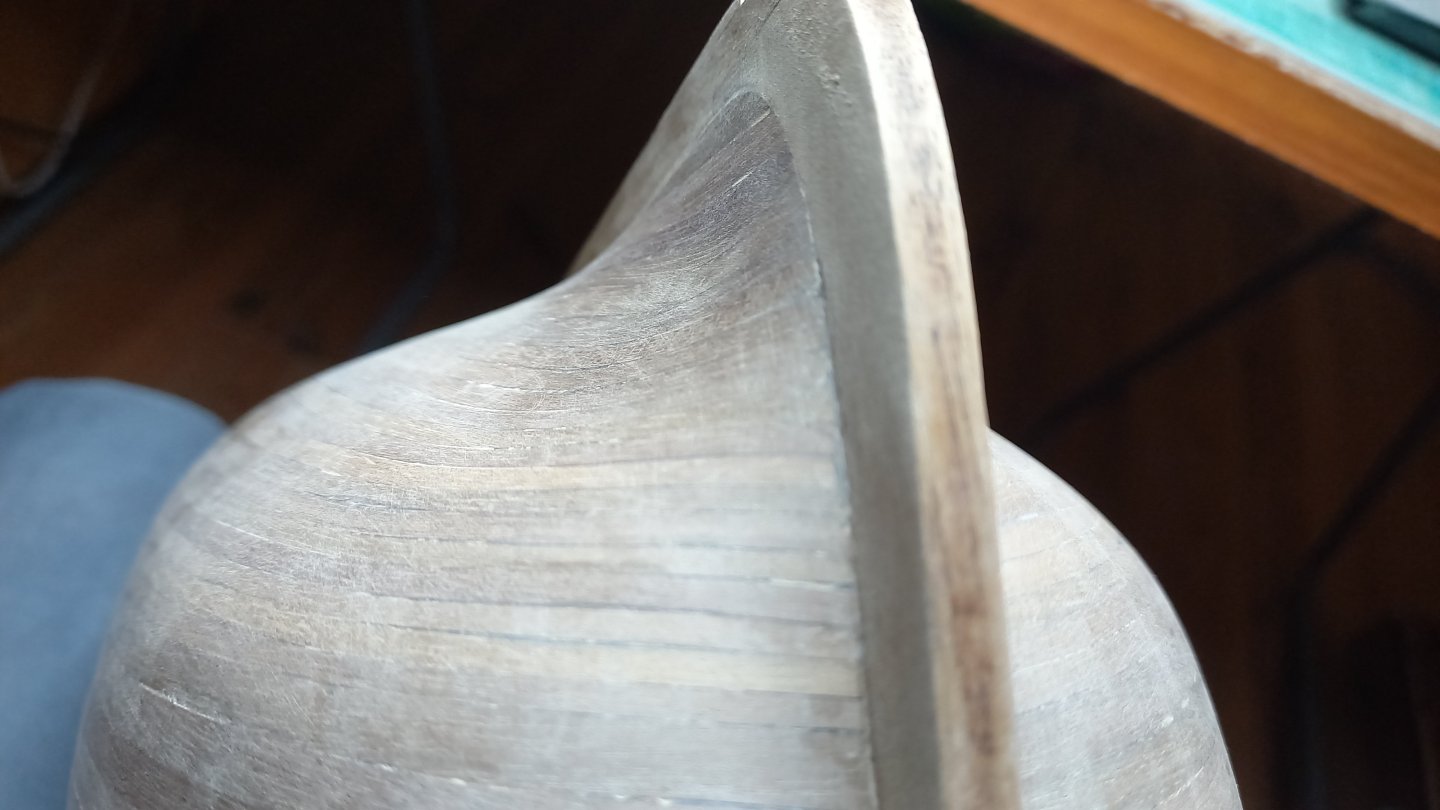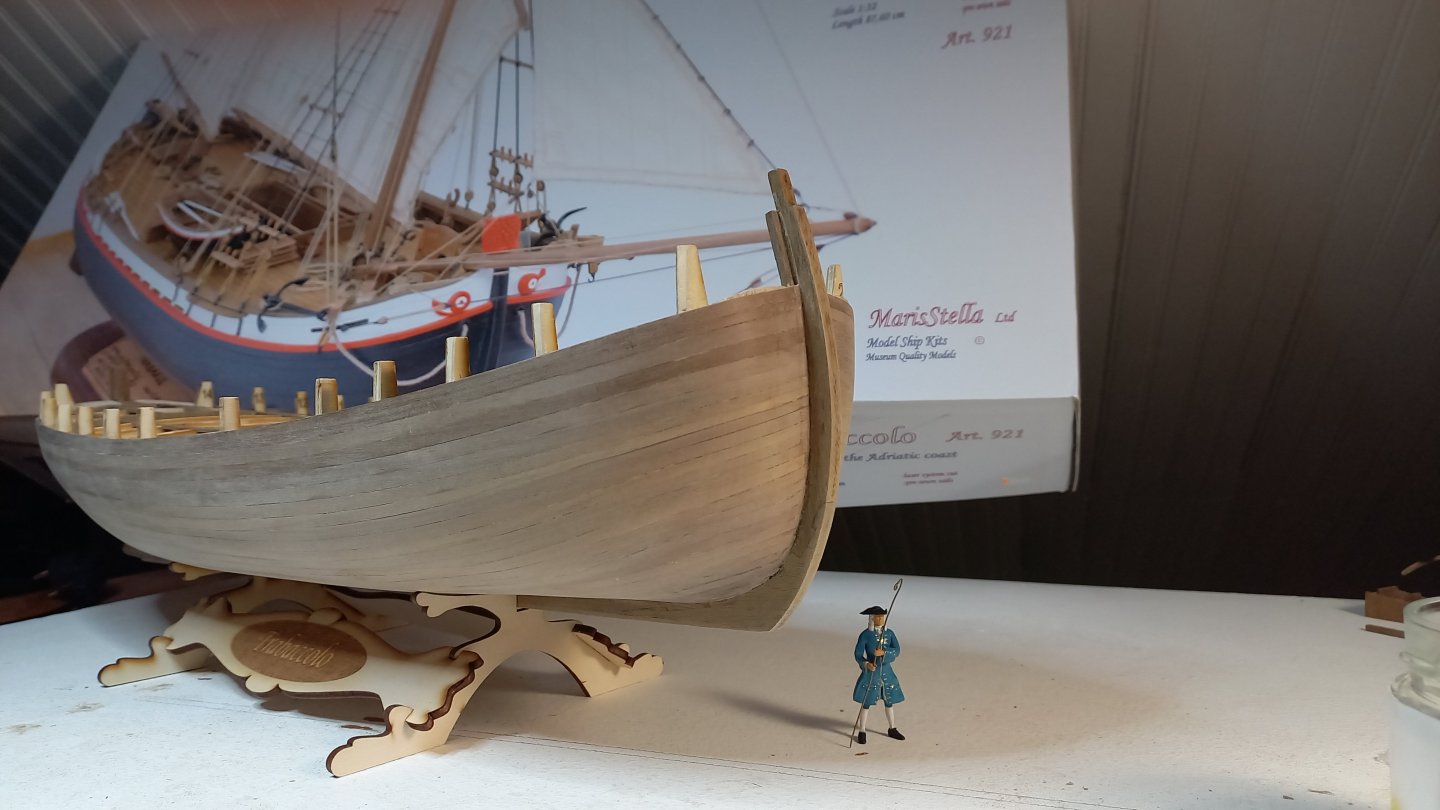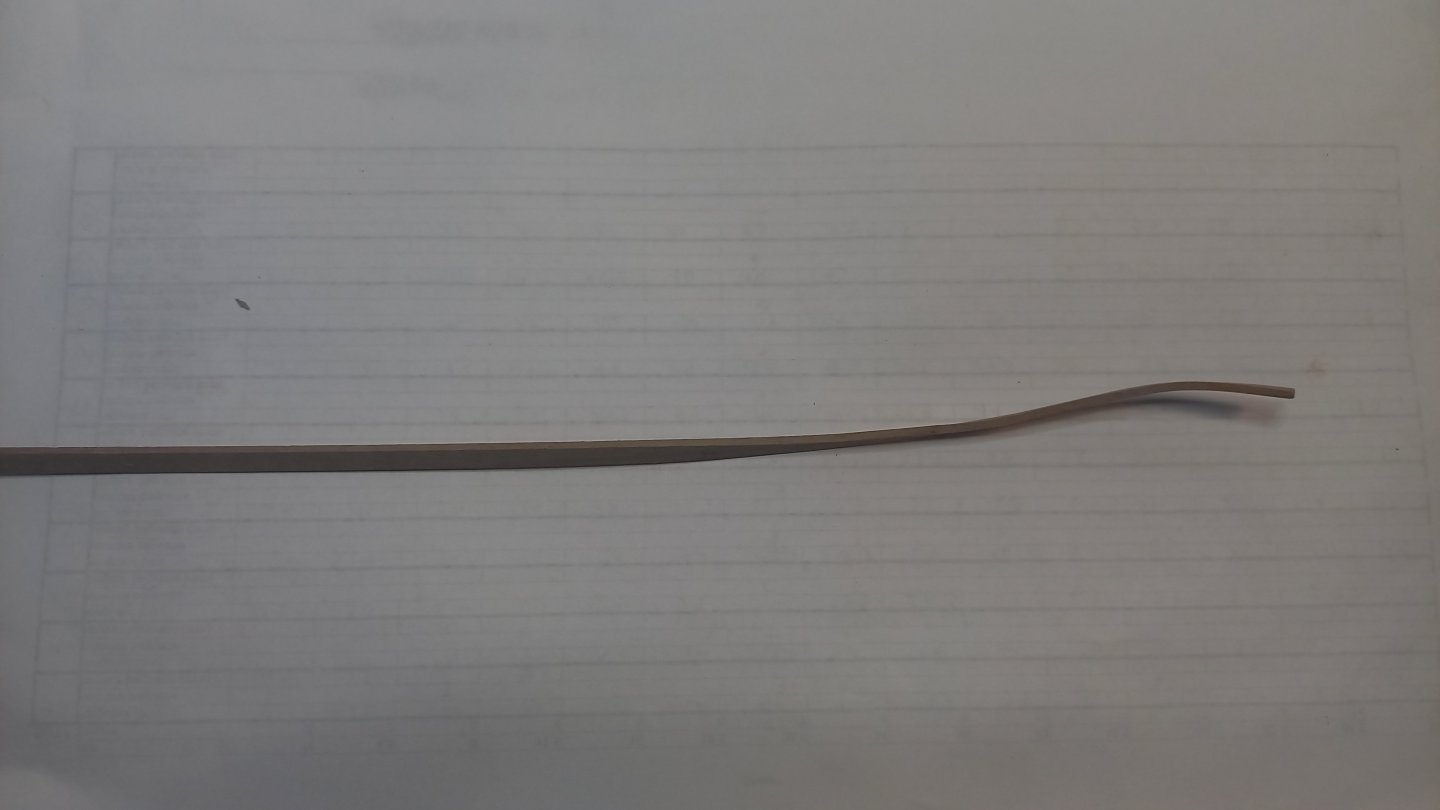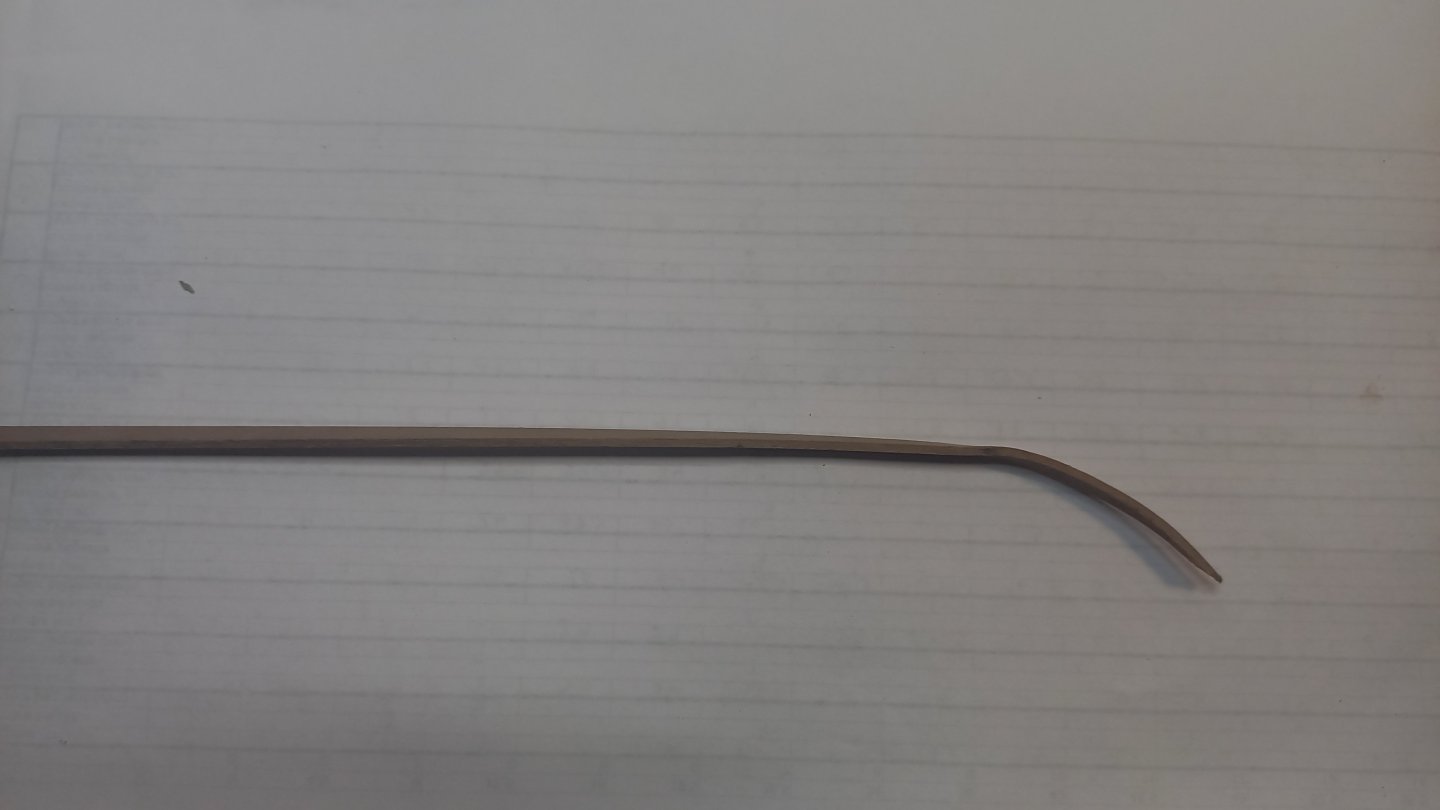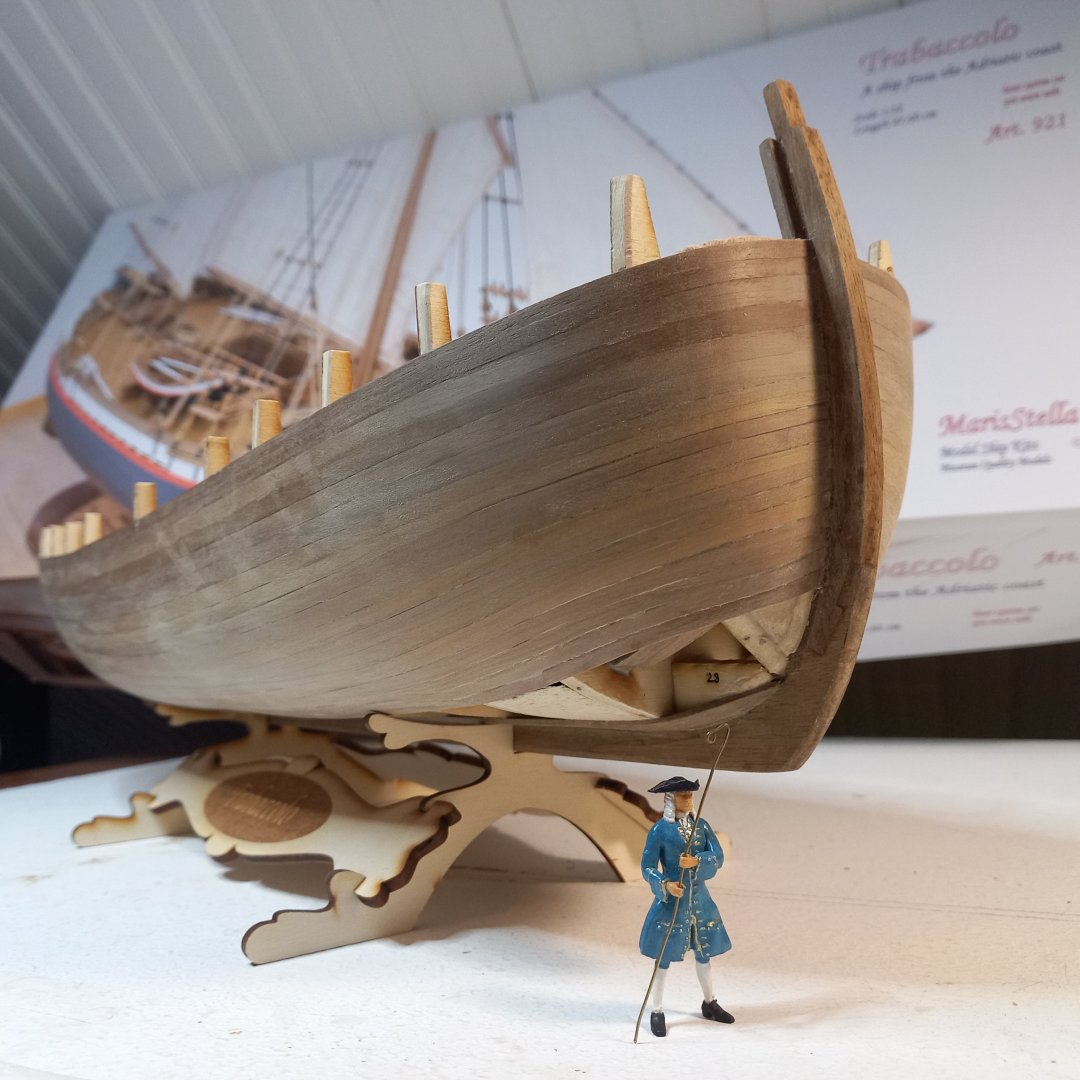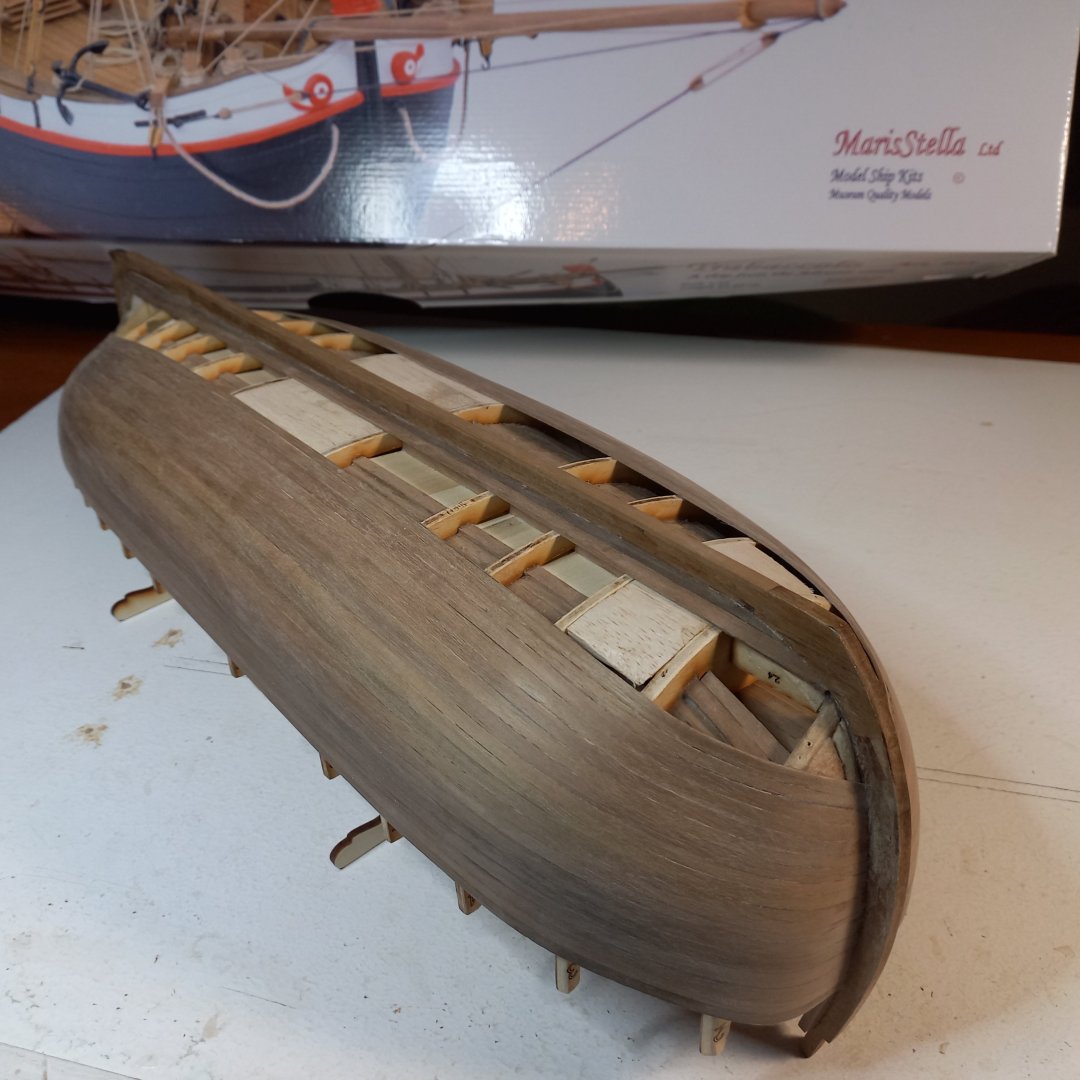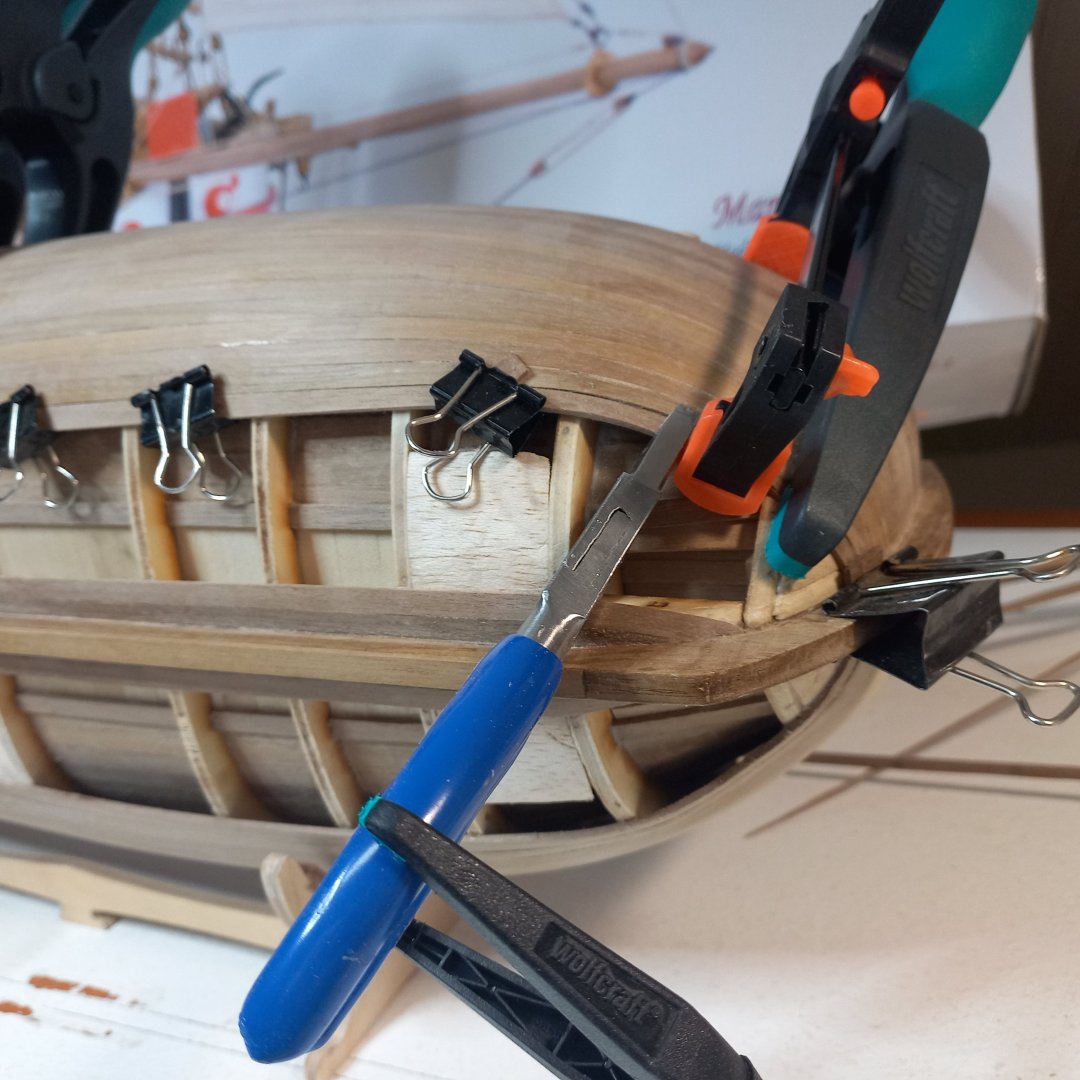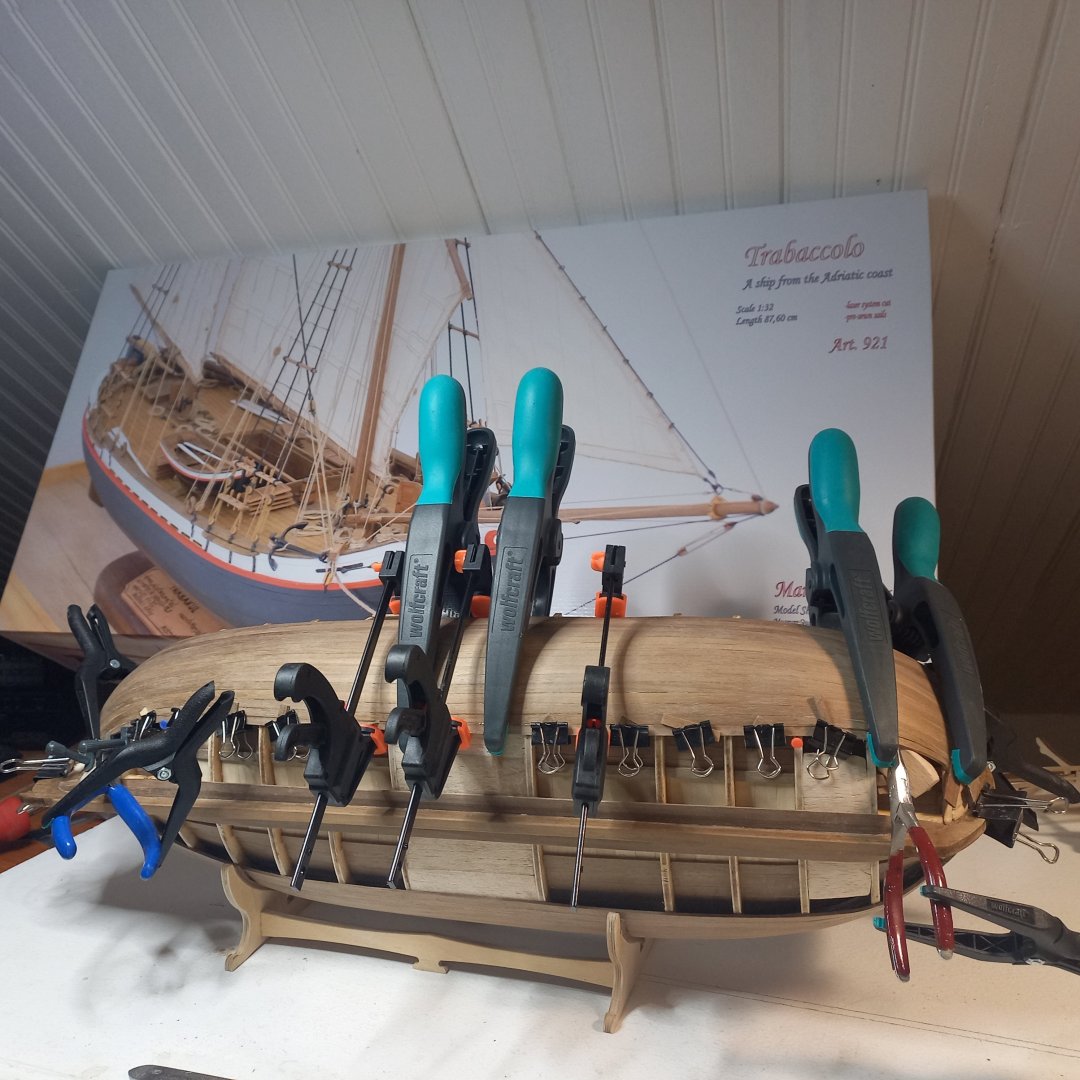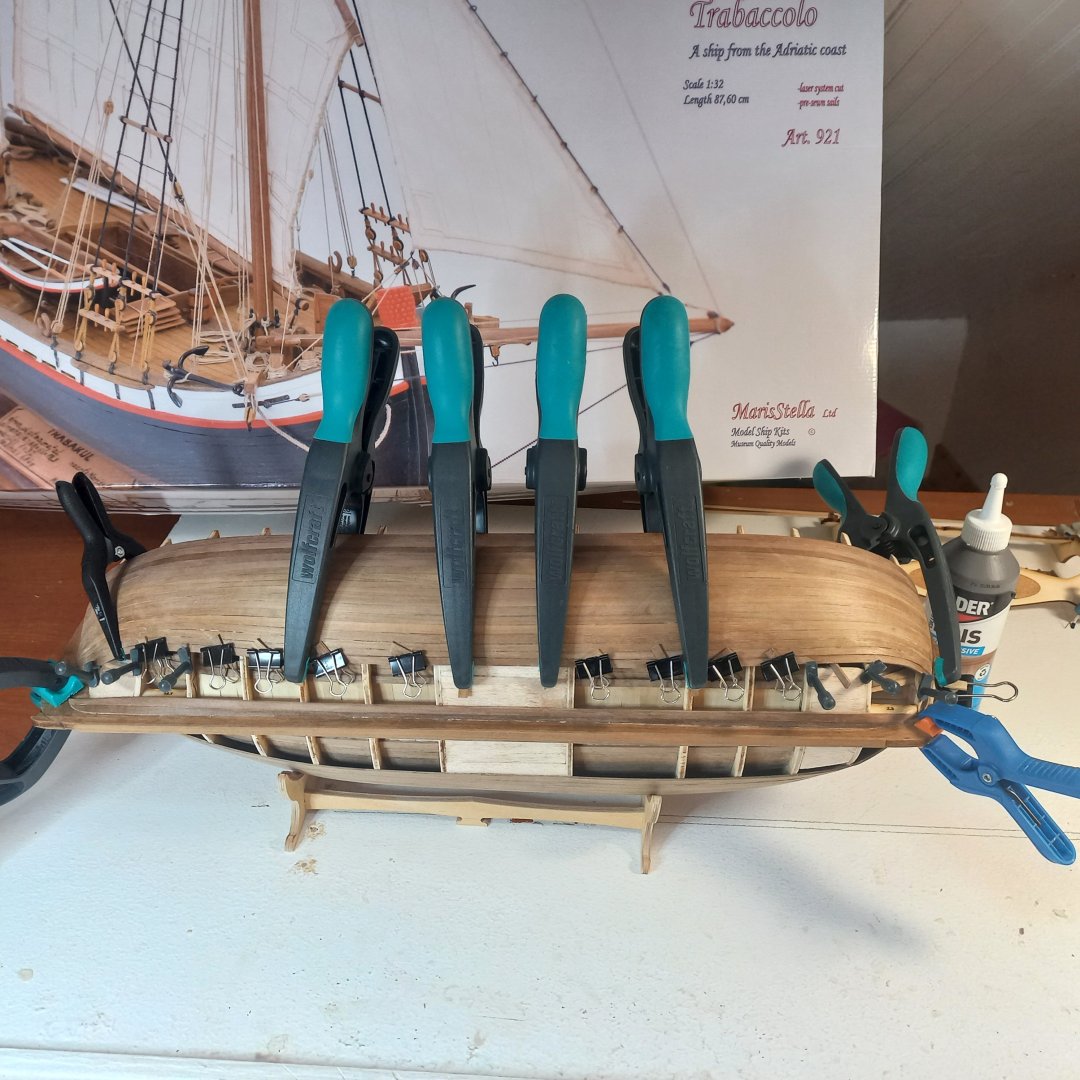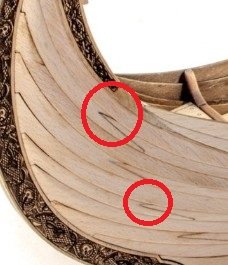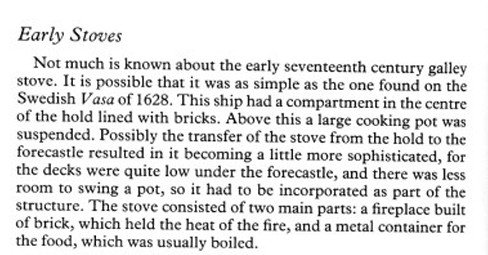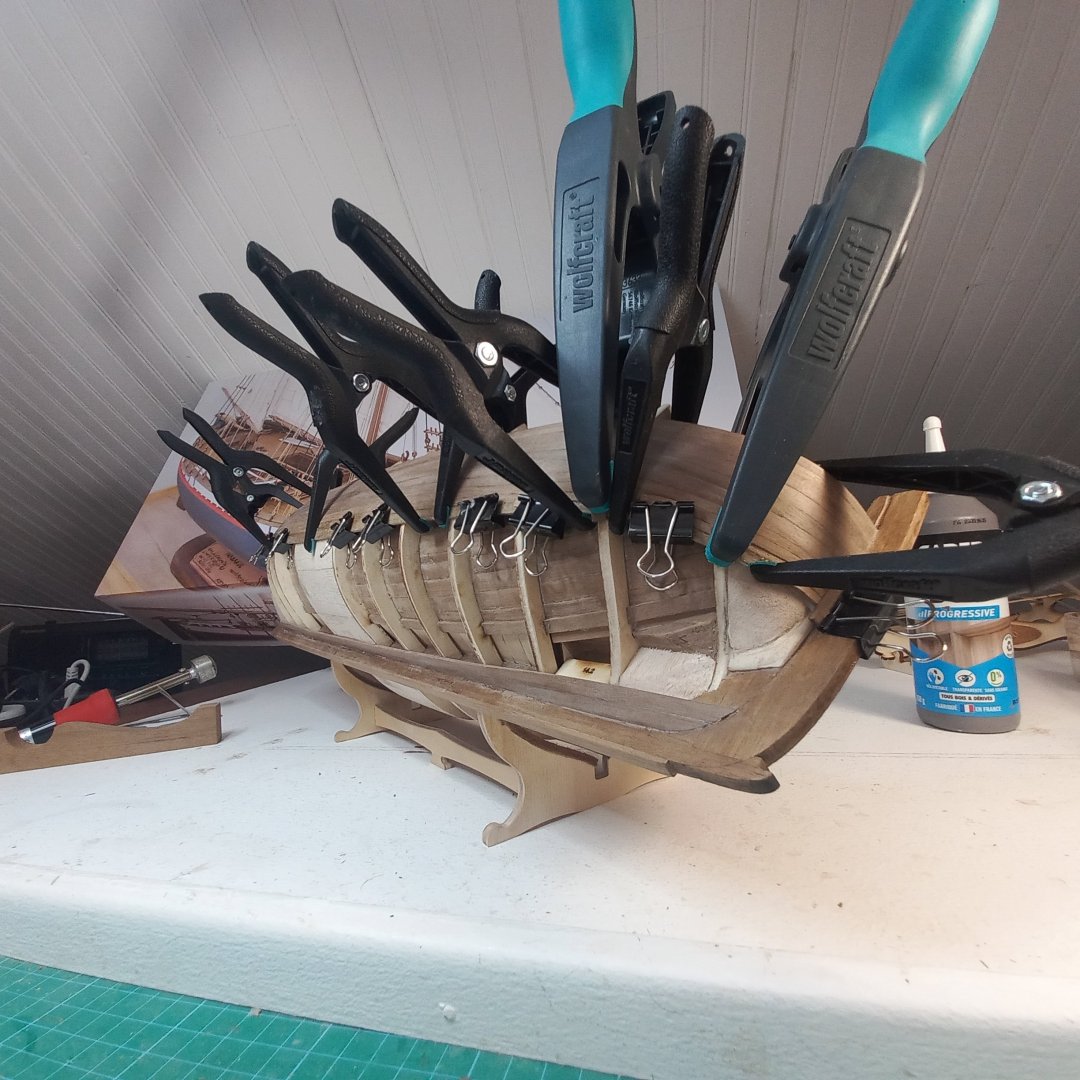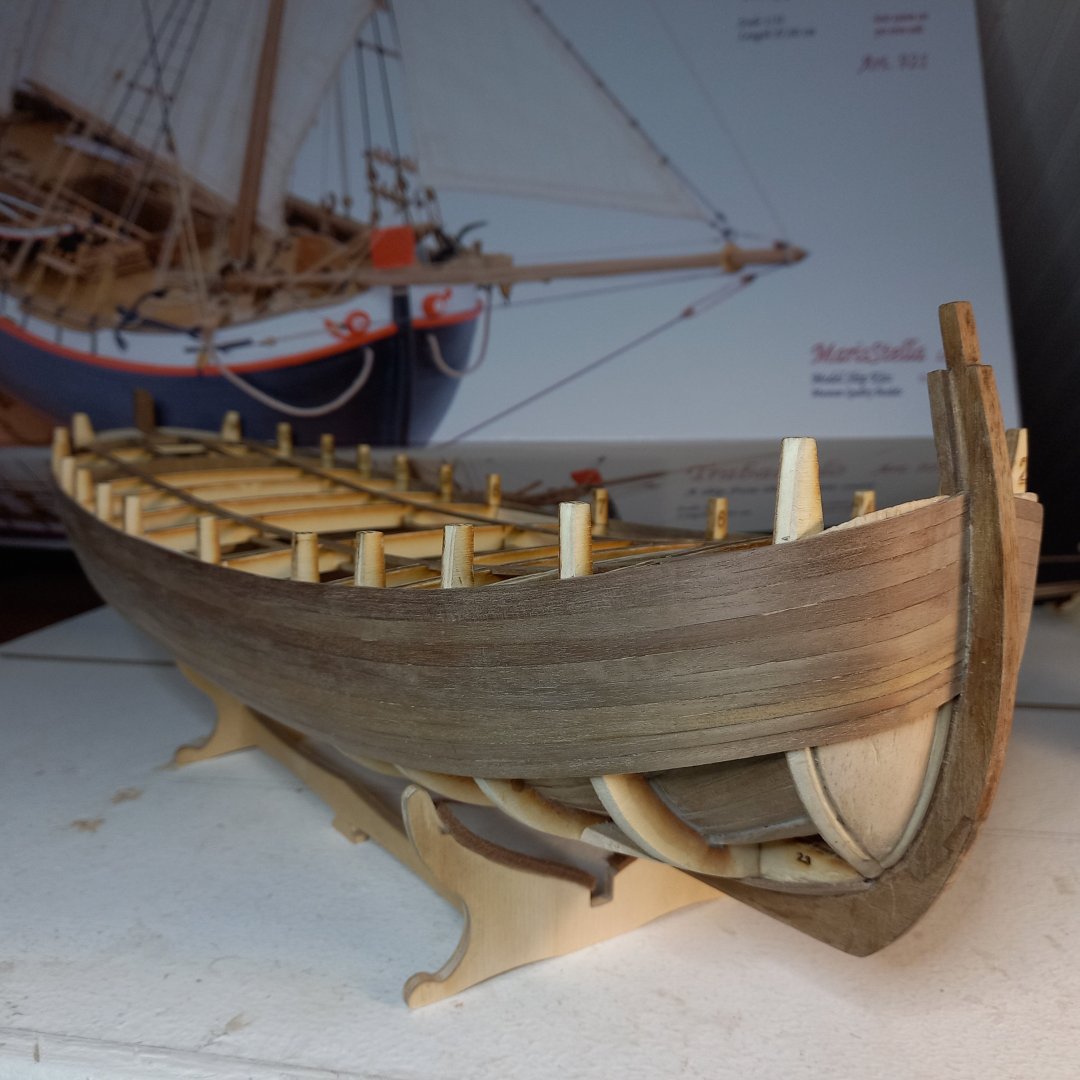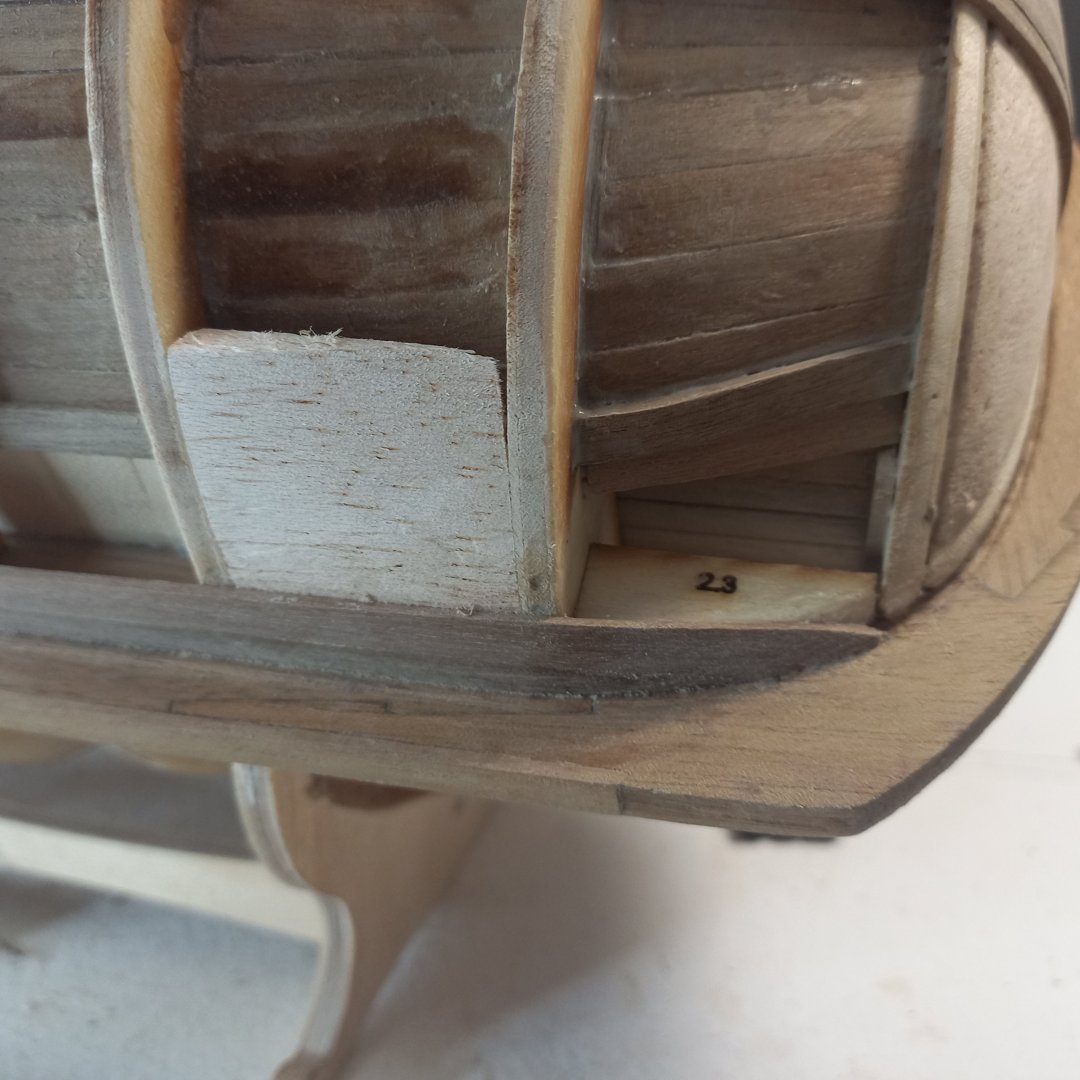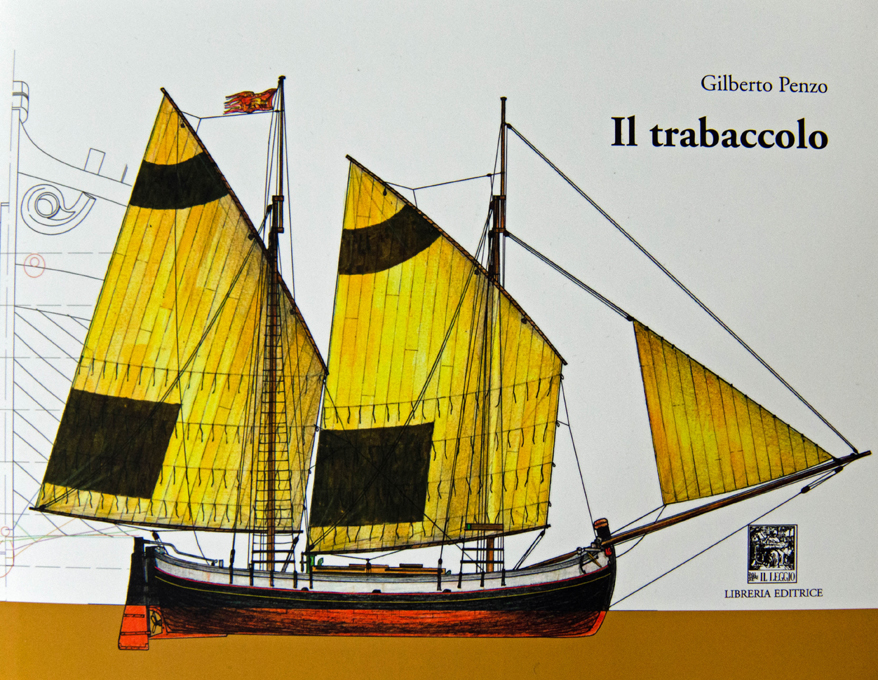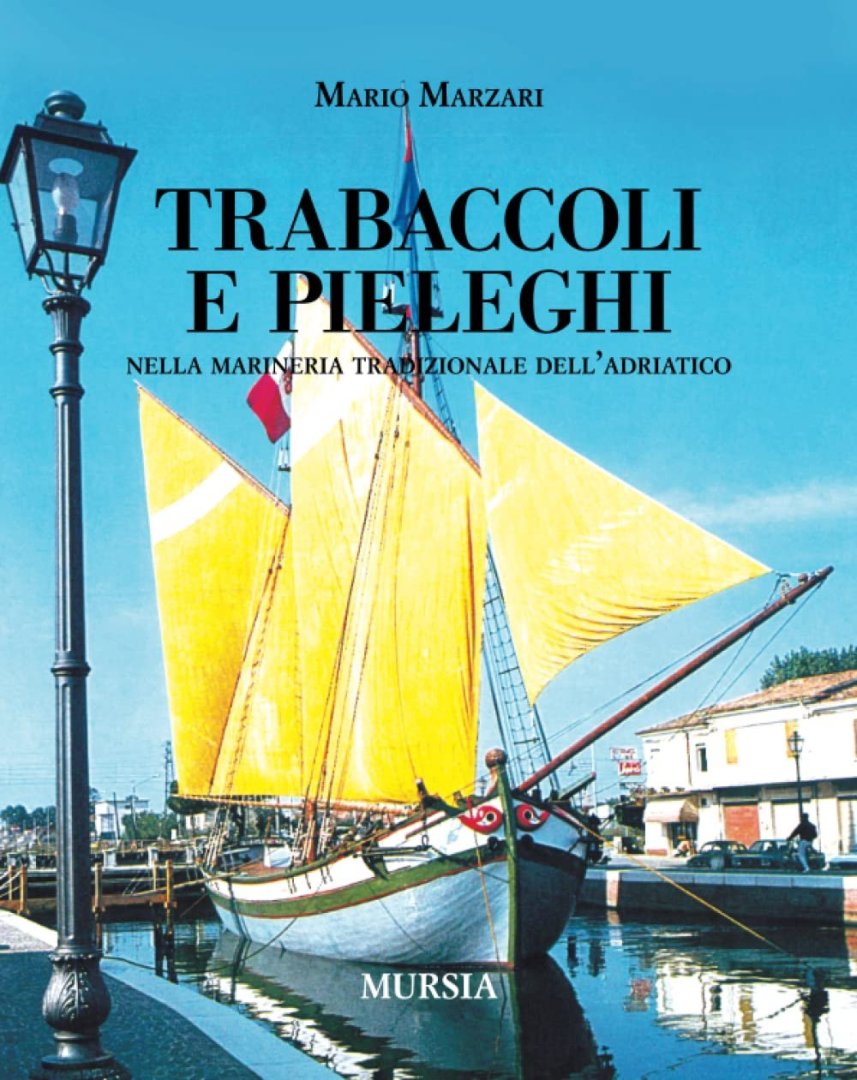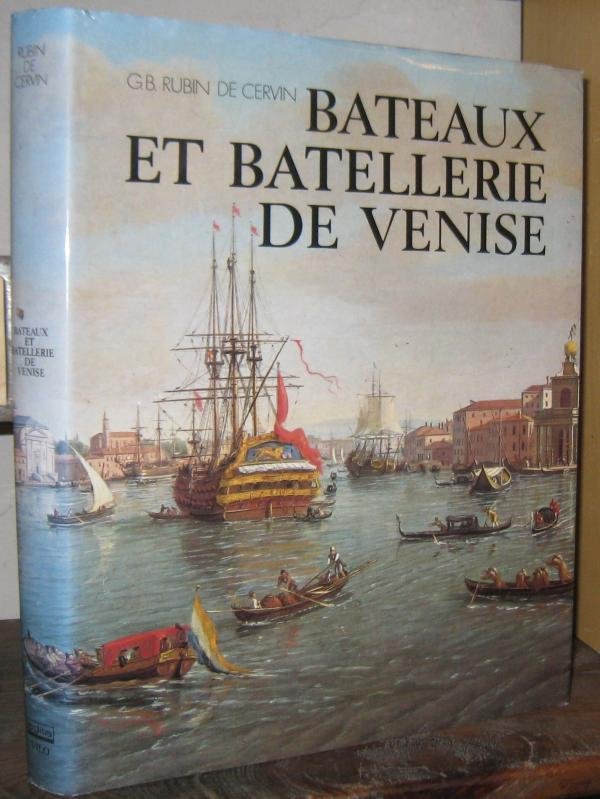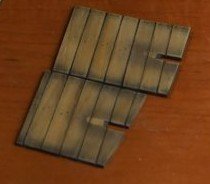-
Posts
201 -
Joined
-
Last visited
Content Type
Profiles
Forums
Gallery
Events
Everything posted by François de Saint Nazaire
-
Gary, Better day after day. Bravo
- 90 replies
-
- Friendship Sloop
- bluejacket shipcrafters
-
(and 1 more)
Tagged with:
-
Hello, I just finished the planking below the deck. The main challenge was to bend the strake from stem to stern to avoid a mix of color, even though it wouldn't have been a problem because the hull will be black. next step will be to sand and clean (remove glue) the hull. There is not a second chance, just one planking ! stern stem
-
- 48 replies
-
Very good news for the "froggies"! I'm very interrested La Tourterelle : A 24-gun french frigate built in Honfleur and commissioned in May 1794. Displacing 350 tons with a length of 38.20 meters, she was captured by the British frigate HMS Lively off Cape Lizard on 13 March 1795. Renamed HMS Tourterelle, the corvette was sunk in 1816 to serve as a breakwater in Bermuda.
-
Thanks, Glenn, for your log with details. It is very kind of you to share your difficulties Bonne journée/ Have a nice day
- 241 replies
-
- Vanguarrd Models
- Harpy
-
(and 1 more)
Tagged with:
-
Ancient Mediterranean Ships, Il Trabaccolo
François de Saint Nazaire replied to OldSaltf's topic in Nautical/Naval History
The book by Gilberto Penzo is very interesting. Another good reference is "Trabaccoli e Pieleghi" by Mario Marzari. There is also Bateaux et batellerie de Venise by G.B. Rubin de Cervin. And a book from Luciano Keber. the translation in french is not good ! -
Hello, Thank you for sharing the pictures. Pavel Nikitin is clearly a strong reference. I'm curious, how did you achieve the color of the deck?
- 15 replies
-
- winchelsea
- medieval
-
(and 1 more)
Tagged with:
About us
Modelshipworld - Advancing Ship Modeling through Research
SSL Secured
Your security is important for us so this Website is SSL-Secured
NRG Mailing Address
Nautical Research Guild
237 South Lincoln Street
Westmont IL, 60559-1917
Model Ship World ® and the MSW logo are Registered Trademarks, and belong to the Nautical Research Guild (United States Patent and Trademark Office: No. 6,929,264 & No. 6,929,274, registered Dec. 20, 2022)
Helpful Links
About the NRG
If you enjoy building ship models that are historically accurate as well as beautiful, then The Nautical Research Guild (NRG) is just right for you.
The Guild is a non-profit educational organization whose mission is to “Advance Ship Modeling Through Research”. We provide support to our members in their efforts to raise the quality of their model ships.
The Nautical Research Guild has published our world-renowned quarterly magazine, The Nautical Research Journal, since 1955. The pages of the Journal are full of articles by accomplished ship modelers who show you how they create those exquisite details on their models, and by maritime historians who show you the correct details to build. The Journal is available in both print and digital editions. Go to the NRG web site (www.thenrg.org) to download a complimentary digital copy of the Journal. The NRG also publishes plan sets, books and compilations of back issues of the Journal and the former Ships in Scale and Model Ship Builder magazines.

.jpg.c334ea1d4cfb12b6b3e2eb949f8f8dea.jpg)
